biographies (Plus de 778 000 résultats)
Type d'article
- Tous les types d'articles
- Livres (775 920)
- Magazines & Périodiques (1 237)
- Bandes dessinées (93)
- Partitions de musique (55)
- Art, Affiches et Gravures (215)
- Photographies (109)
- Cartes (86)
-
Manuscrits &
Papiers anciens (957)
Etat
Reliure
Particularités
- Edition originale (294 758)
- Signé (45 470)
- Jaquette (292 274)
- Avec images (301 977)
- Sans impression à la demande (769 069)
Livraison gratuite
Pays
Evaluation du vendeur
-
[Archive]: A Collection of Inscribed Books, Correspondence, and Ephemera Related to FDR and his Friend and Personal Assistant, Marvin H. "Mac" McIntyre
Edité par Washington, D.C., 1943
Vendeur : Between the Covers-Rare Books, Inc. ABAA, Gloucester City, NJ, Etats-Unis
Edition originale Signé
Unbound. Etat : Near Fine. A remarkable collection of letters and limited edition books from Franklin Delano Roosevelt to his longtime friend and personal secretary, Marvin H. "Mac" McIntyre. The collection includes 10 Inscribed books (each issued in an edition of 100 copies or less), a large, early Inscribed portrait, nine Typed or Autograph Letters Signed, and several additional items related to their long friendship and professional relationship. The collection is overall near fine. McIntyre (1878-1943) was born in Kentucky and studied at Vanderbilt. While working as Special Assistant to Secretary of the Navy Josephus Daniels, he befriended then-Assistant Secretary of the Navy Franklin D. Roosevelt. McIntyre went on to work on Roosevelt's 1920 Vice Presidential campaign; this collection includes a striking 1920 portrait of Roosevelt warmly Inscribed: "For the only Mc [sic], in memory of our work together, past present, and to come. Franklin D. Roosevelt. August 3, 1920." McIntyre remained in Washington during Roosevelt's subsequent tenure as governor of New York, but as Roosevelt's 1932 campaign gained steam, he tapped Mac to be his Press Officer. Upon taking office in March 1933, Roosevelt appointed McIntyre as his Appointments Secretary, essentially putting him as close to the President as Missy LeHand or Grace Tully. McIntyre was away from the White House from 1938-1941 due to illness, but returned to his post in 1941. McIntyre died in December 1943, in the middle of Roosevelt's third term. McIntyre had several titles over the years: Assistant Secretary in Charge of Appointments, Traveling Secretary, Appointments Secretary, and Correspondence Secretary, and it is clear that the two men were close. In addition to warmly Inscribed copies of Roosevelt's cruise logs and famed "Christmas books" (including the highly sought-after *Addresses of Franklin D. Roosevelt and Winston Churchill* of 1942), the correspondence, some of it written during McIntyre's convalescence in North Carolina, shows Roosevelt's esteem for the man. In 1938 he writes: "I am often touched, but seldom have I been so touched as by your letter to Miss Le Hand. It was one of a very small number of letters which occasionally she shows to me. Both of us were dissolved in tears. Your one hundred per cent support in the mountains of North Carolina means more to me than carrying Vermont." The letters, four four Autograph Letters Signed and five Typed Letters Signed which span the years 1933-1942, are brief and very cordial catch-ups; FDR writes of his confidential travel plans, a fishing expedition, and thanks him for a Christmas gift. One letter was sent from the London Economic Conference sometime in July 1933, and another is a Signed copy, of a letter of thanks that FDR sent to the Dean of Atlanta Law School, who was conferring an honorary doctorate on McIntyre. All of the letters save one are in their original envelopes; the envelopes show light wear, the letters, aside from a single original fold, are fine. Also included are four notes Initialed by Roosevelt and five typed carbons of letters from FDR to McIntyre (likely made by the family), the originals not present here. Another testament to their friendship is that several items were gifted to McIntyre's widow after her husband's death. Roosevelt Inscribes his 1943 "Christmas book" to her: "For Dodie McIntyre - This was on the list for good old Mac, and I want you to have it in his memory. Franklin D. Roosevelt." He would also send her an Inscribed copy of the following year's "Christmas book," sadly his last. Also included is a holiday letter written by FDR's long-time Press Secretary Stephen T. Early to McIntyre's widow Dodie five years after his passing: "I treasure your friendship as one of my most satisfying possessions." Dodie was also invited to the White House for a 1966 presentation of a portrait of Eleanor Roosevelt to the White House collection; this invitation is also included. A remarkable collection of rare and desirable Roosevelt publications, warmly Inscribed, and letters and related material, the fruit of a longtime personal and professional relationship.
-
The Progress of Poesy: A Pindaric Ode, by Thomas Gray
Edité par London, 1916
Vendeur : Bromer Booksellers, Inc., ABAA, Boston, MA, Etats-Unis
Signé
Sangorski, Alberto (illustrateur). Small quarto. (11)ff., + 3ff. Signed at the colophon, after the certification statement, by Alberto Sangorski. A unique illuminated manuscript on vellum, in which Sangorski engages with and inserts himself into a genealogy of Neoclassicism. His devotion to the tradition of the medieval manuscript is at once classical and modern, and deeply entrenched in naturalistic aesthetics; the title page features a lush floral border surrounding a field of vines, and a similar border ornaments each page of text. Nine large illuminated initials are intertwined with the greenery, the language itself relying on and supporting the landscape of the page. Sangorski's four miniatures depict scenes of Classical Greek pastoral life, save for the title-page portrait of Gray. These images likewise seat Sangorski himself among the Romantics and Pre-Raphaelites, but also serve the greater purpose of establishing Gray's position as a sort of proto-Romantic. Although that title alone is too simple a reading of Gray's entire corpus, in the context of the specific poetry transcribed by Sangorsk,i the label bears out, the illustrations underscoring the Pindaric structure foundational to the text. The miniatures offer a further valence to the Romantic heritage Sangorski signalsâ "he has styled them rather obviously after Lawrence Alma-Tadema, being equally devoted to texture, reflective surfaces, and tableaux of ancient Greece. Uncommon to Sangorski's series of manuscripts is the penultimate leaf, which bears a short biography of Gray. Bound by Rivière & Son relievo-style, in full blue morocco with an inlaid red morocco and gilt-ruled border around a dense frame of gilt floral and leaf designs, grounded in pointillé and punctuated with dots in dark blue and petals in red. The frame on the upper cover surrounds an arabesque recessed panel containing molded a leatherwork design of a rose bush on which alight a bird, a butterfly, and bees with mother-of-pearl wings. The lower cover identically framed around an arabesque recess, this with molded leatherwork showing blue morning glories inhabited by a moth, a caterpillar, ladybugs, and more bees with mother-of-pearl wings. Spine in six compartments, two with titling in gilt and remaining four with borders of red and gilt around gilt panels. Maroon morocco doublures, blue silk flyleaves, edges gilt. Fine. Housed in a silk-lined box. A.e.g. Bookplate of Cornelius J. Hauck on front flyleaf. (Hauck 668, Lahey 63).
-
Complete Collection of Tarzan Novels
Edité par Various, Various, 1965
Vendeur : Type Punch Matrix, Silver Spring, MD, Etats-Unis
Edition originale Signé
Etat : Very good. First edition run of all 24 novels in the Tarzan series, including TARZAN OF THE APES in the rare original dust jacket and five inscribed books - along with Burroughs's rare 1917 AUTO-BIOGRAPHY and two further Tarzan titles. Tarzan is one of the most recognizable pop cultural icons of the 20th century. Beginning with the novels, but quickly translating to film and beyond, Tarzan soon had his own merchandise, piracies, and international adaptations (including Bollywood films and Japanese manga). Tarzan's relationship with the movies - beginning in 1918, during the early years of popular film - was especially rich. One producer of Tarzan films, Sol Lesser, described Tarzan's global market saturation with only slight hyperbole that "there is always a Tarzan picture playing within a radius of 50 miles of any given spot in the world - in Arab villages, African bush theatres and in pampas settlements down the Argentine way" (quoted in Abate & Wannamaker, 3). But Tarzan enjoyed many revivals in print as well; in 1963 "one out of every thirty paperbacks sold was a Tarzan novel" (Torgovnick, 42). For over 100 years, Tarzan has remained a vivid figure in our popular imagination. Tarzan's world is not all boyhood innocence: it also "embodies a powerful emblem of past white Western imperialism and, correspondingly, of the present colonialization of the world by American culture" (Abate & Wannamaker, 5). But alongside this, Tarzan has remained internationally beloved as a potent mix of the Rousseauian "noble savage" and the Swiftian "stranger in a strange land," - a mythic figure like Romulus and Remus (one of Burroughs's inspirations) or Robinson Crusoe (also an early literary phenomenon). Above all, the books were fun: as Ray Bradbury recollected, "we may have liked Verne and Wells and Kipling, but we loved, we adored, we went quite mad with Mr. Burroughs" (intro to Porges, xviii). This complete collection of the Tarzan novels features one of the rarest and most sought after books in Modern Firsts collecting: a first edition of TARZAN OF THE APES in the original dust jacket. Of the five books inscribed by Burroughs, two are among the earliest in the series: BEASTS OF TARZAN (#3) and SON OF TARZAN (#4). In addition to the novels of the main series, this collection includes the scarce early piece of Burroughsiana, a short memoir commissioned by the Republic Motor Truck Company on one of Burroughs's transcontinental journeys; only a few copies were bound in the deluxe suede binding, apparently for the personal use of the author. The final two included books are TARZAN AND THE TARZAN TWINS, which collects two Tarzan novellas for younger children; and THE OFFICIAL GUIDE OF THE TARZAN CLANS OF AMERICA, published by Burroughs as a manual for organizing and running a Tarzan fan club. Altogether, these books form an exceptionally comprehensive monument to the Tarzan phenomenon. 27 volumes, most 7.25'' x 5''. Original cloth bindings. All in original dust jackets except RETURN, BEASTS, and SON; EARTH'S CORE in a later Grosset & Dunlap jacket. TARZAN OF THE APES in rarest state, per Currey: title page cancel, W.F. Hall imprint in Gothic lettering, binding without acorn. Additional first editions outside the Tarzan novels: AN AUTO-BIOGRAPHY (1917); TARZAN AND THE TARZAN TWINS (1963); and OFFICIAL GUIDE OF THE TARZAN CLANS OF AMERICA (1939). Jackets of TARZAN OF THE APES, JEWELS, TERRIBLE, GOLDEN LION, and ANT MEN restored; a few others with tape repairs or chipping to edges. Condition ranges from fine copies (TRIUMPHANT, FORBIDDEN CITY) to very good minus (JUNGLE TALES, LORD); overall very good. Five inscribed books: BEASTS, SON, GOLDEN LION, INVINCIBLE, and LEOPARD MEN. AUTO-BIOGRAPHY and FOREIGN LEGION in custom clamshell boxes. A full inventory is available upon request.
-
Fleming's manuscript notes on an international crime conference, developed into From Russia, With Love.
Edité par [Turkey: 1955], 1955
Vendeur : Peter Harrington. ABA/ ILAB., London, Royaume-Uni
A significant Fleming manuscript, his notebook filled with observations, questions, and ideas from his observation of the 23rd annual conference for the International Criminal Police Commission in Turkey, gathering material which had a clear influence on From Russia, With Love and the remainder of the Bond series. The manuscript was studied and cited by Pearson in his biography of Fleming. The 1955 conference of the ICPC - the precursor to Interpol - drew together government representatives, agents, and related stakeholders from around the world. Fleming was sent to cover the conference for the Sunday Times, travelling in the company of Sir Ronald Howe, the Assistant Commissioner of Scotland Yard, and was introduced to a number of important businessmen and government officials. "The elaborately embossed blue pads which the Turks had distributed were ideal for a thriller-writer's notes and queries, and he brought several pages of these back with him" (Pearson, p. 272). Fleming was disappointed with the people he met at the conference. "The idea of an Interpol Conference sounds like a thriller-writer's private gold-mine. The reality must have given Fleming on more reminder that fiction is stranger and infinitely more satisfactory than truth. For the truth about the Interpol Conference was that it was a very serious, very unspectacular convention of dedicated professional men, and it needed all Fleming's ingenuity to discover sufficient news for an article on the conference agenda for that week's Sunday Times. all this left Fleming rather stunned, and he gave his private verdict on the Interpol Conference in a letter to Admiral Godfrey. It sums up the curious contempt which the man who dreams about crime must always feel when he meets the men who merely deal with it. 'The trouble with these policemen', he wrote, 'is that they have no idea what is really interesting in their jobs and regard criminal matters as really a great bore'" (Pearson, p. 270). Nonetheless, the manuscript notes show Fleming paying close attention to the intelligence community and especially the Russians, evidently with an eye to material for his novels. He jots down subjects on which information is needed including "types of cigarettes, cigars. is tea brought into meetings? Russian girls love Englishman - what for - what dislikes". He questions "Types of cigarettes, cigars, Black Sea villa - where, description, swear-words. In conversation-polite? Harsh?". He notes of Russian women "no women smoke not well regarded. Hair very important. Puritanical sexually. No lipstick. Good clean nails. girls must have scent". Fleming makes numerous comments regarding the operations of various global intelligence services, Russian language, and culture - "Colours of folders. Top Secret, etc. SMERSH. Show passes - what color - photo taken again. Use numbers? Or letters! for spies?". Aside from the conference, Fleming travelled around Istanbul, and witnessed a riot after news broke that the birthplace of Kemal Ataturk had been bombed by Greek terrorists. This, Pearson notes, was Fleming's first sight of real violence (p. 271). Most important was Fleming's guide for the trip, the Oxford-educated shipowner Nazim Kalkavan, who regaled Fleming with thrilling tales of Soviet spies and vengeful belly-dancers. Though Fleming notes in his personal copy of this title (held in the Lilly Library, University of Indiana) that the character of Darko Kerim was entirely fictional, Gilbert and Pearson both note that the number of similarities between the character and Kalkavan suggest otherwise. Another note "popular gold in teeth. Steel caps = service teeth" - seems a foreshadowing of the character Sol 'Horror' Horowitz in the Spy Who Loved Me, further adapted as the character of Jaws in later Bond films. Provenance: Sotheby's, London, July 20, 1989, lot 176. Gilbert A5. John Pearson, The Life of Ian Fleming, 1966. Top-bound notepad (275 x 198 mm), emblems of the International Criminal Police Commission (ICPC) and the Turkish Criminal Police Commission printed in dark blue to front paper wrapper and at head of each leaf, 3 initial leaves with autograph notes in blue ink (rectos only). Together with a bifolium (336 x 210 mm), 4 lined pages, pp. 1, 2 and 4 featuring autograph notes in red and blue ink. Housed in a black quarter morocco solander box by the Chelsea Bindery. Notepad: a few light marks to wrappers, minor creasing at head of block, couple of horizontal creases to wrappers, and to a few initial leaves where previously folded over, two short closed tears in margin of front wrapper corresponding with creases, first leaf detaching slightly from block on the upper left side but holding firm. Bifolium: mild toning, minor creasing to corners, central horizontal crease, leaves with short split starting along the fold at edge, just touching three letters on one page, light foxing to outer margins, tiny mark from adhesion of p. 2 and 3 in the upper inner corner, small spots to p. 4. Some pencilled notes to the documents from John Pearson's prior research, clippings and printouts on the notes also included. A number of initial leaves of this notebook were excised at a previous time and are now held in the Lilly Library. Overall in very good condition.
-
Archive collection, consisting of preliminary studies and drafts for his magnum opus "Geschlecht und Charakter" ("Sex and Character") as well as for "Eros und Psyche", together with notes and autobiographical writings.
Edité par [Vienna], c. 1899-1902., 1902
Vendeur : Antiquariat INLIBRIS Gilhofer Nfg. GmbH, Vienna, A, Autriche
Manuscrit / Papier ancien
Altogether c. 700 pp., mainly written in Weininger's meticulous handwriting, but also including some more perfunctory pages in Latin script, some shorthand. Numerous corrections and deletions. Some browning and wrinkling, occasional paper flaws to edges. Various formats, but mostly 4to (34:21 cm), as well as a few pieces in-8vo and small formats. Well preserved altogether. Extensive and previously unknown partial estate of the ill-fated Austrian philosopher. Of outstanding importance for a scholarly study of the textual development of Weininger's principal work as well as for the biography of the controversial philosopher. The present collection mainly comprises preliminary studies and working drafts for his dissertation "Eros und Psyche", as well as for "Geschlecht und Charakter" ("Sex and Character"), the notorious magnum opus which he expanded from his dissertation. Also included are numerous citations and excerpts from Weininger's literary studies, several library order slips, some exercise books and letters, a portrait, and a short autobiographical statement, as well as his father's written permission that Otto learns how to handle a gun. - Weininger's major work, a precocious study of the relationship of sex and character which earned the author his Ph.D. degree, was dismissed at first but gained immediate popularity after he shot himself at the age of 23. The work remains a key document of Vienna fin-de-siècle thinking. In spite of his rabid misogyny and antisemitism, Weininger was considered a genius by the philosopher Ludwig Wittgenstein as well as the writer August Strindberg. - Some browning and wrinkling, occasional paper flaws to edges. Well preserved altogether.
-
White House portfolio.
Edité par Washington, DC: 1942-45, 1942
Vendeur : Peter Harrington. ABA/ ILAB., London, Royaume-Uni
Signé
A superbly evocative memento of the wartime FDR White House, a handsome commercial leather portfolio personalized for Roosevelt's use and containing some 20 leaves of various White House stationery and printed appointment documents all signed by Roosevelt in preparation for use. Such personal artefacts relating to FDR rarely appear on the open market. Roosevelt has made autograph notes on three of the folders: "Robert Ford to come Wed or Thurs" (on cover of "To Sign"); "John F(?) - How handle insurance on production?" (on front of "The President / For Reading"); and "support of me - / tie in inflation - / Cash surrender - 4% compound int. from date armistice / $1,200,000,000" (inside "Miscellaneous Correspondence"). Other documents and stationery are retained within one of the five manila folders, each of which is titled holographically in pencil by a number of unidentifiable hands. Several other previous titles in ink and pencil are present inside the folders. The note "Cash surrender. from date Armistice" probably refers to a law passed by Congress in 1924 that would provide "several million veterans" of the First World War with "insurance policies to be paid off for their cash surrender value in 1945" (Lawson, p. 15). The content of the notes indicate that they were written after the United States had entered the war, in particular the first memo regarding Robert Ford. Ford was very likely the captain of the Pacific Clipper, a Boeing 314, one of Pan Am's early trans-oceanic flying boats, which had been forced unexpectedly to make the first around-the-world flight by a commercial airliner. It was a story that made the headlines in the United States. The Clipper was near the end of a flight from San Francisco to Auckland, New Zealand, when the Japanese attacked Pearl Harbor on December 7, 1941. Ford received word from Pan Am to return to the United States by flying westward, over terrain with which none of the crew was familiar, and on their own in securing both gasoline and supplies. The Pacific Clipper eventually flew 31,500 miles over the course of 209 hours - traversing Australia, India, Arabia, Africa, the South Atlantic, and Brazil - before finally landing on the morning of January 6, 1942, at the Marine terminal at LaGuardia Airport in New York City. "After the US entered the war, four of the 314s were pressed into military service with the US Army Air Forces Air Transport Command as the C-98 and one with the Navy, apparently under the same designation. The militarized 314s were used primarily to ferry personnel on long distance routes all over the world. One was used to carry President Franklin D. Roosevelt to the Casablanca Conference in 1943, and the BOAC 314As were used on several occasions to transport Prime Minister Winston Churchill" (Johnson, pp. 87-8). The annotation "Bob Sherwood" on one of the folders refers to the writer Robert E. Sherwood, an original member of the Algonquin Round Table. His play, Lincoln in Illinois (1939), led to his introduction to Eleanor Roosevelt and, ultimately, FDR, who he went on to serve as "speechwriter and adviser. Sherwood's speechwriting did much to make ghost-writing for public figures a respectable practice. Between service as special assistant to the secretary of war (1940) and to the secretary of the navy (1945), Sherwood served as director of the overseas branch of the Office of War Information (1941 44). From his wartime association with Roosevelt came much of the material for Roosevelt and Hopkins: An Intimate History", which won the 1949 Pulitzer Prize for Biography or Autobiography and a 1949 Bancroft Prize (Encyclopaedia Britannica). E. R. Johnson, American Flying Boats and Amphibious Aircraft; An Illustrated History, 2009; Don Lawson, FDR's New Deal, 1979. Folio (360 x 250 mm). Brown leather portfolio, front cover lettered in gilt bottom right ("Franklin D. Roosevelt President of the United States") with pictorial desk scene stamped in blind top left, interior lined with light brown moiré cloth, inside front cover flap lettered "For Immediate Attention", 4 divisional panels lettered alphabetically along fore edges. Contents comprising: 5 manilla folders, all annotated in pencil ("Miscellaneous Correspondence & Bob Sherwood Sketches", "For the President", "The President / For Reading", "To Sign", "Signed"), the last holding 21 leaves of white or cream paper, varying letterheads, some blank, all but one signed "Franklin D. Roosevelt", two printed proclamations addressed to the Senate. All housed together in a custom brown quarter morocco and cloth slipcase, with matching chemise. Portfolio slightly rubbed, leaves of paper fine, overall in excellent condition.
-
Original artwork for A Midsummer Night's Dream: "Up and down, up and down, Goblin, lead them up and down".
Edité par 1908, 1908
Vendeur : Peter Harrington. ABA/ ILAB., London, Royaume-Uni
Signé
Published within Rackham's edition of A Midsummer Night's Dream in 1908. The watercolour depicts Puck leading Lysander away from Demetrius in Act 3, scene 2. The piece appears opposite page 86 and is one of the 40 colour plates. The board has the title added in the artist's hand, together with identification of the book and the artist's signature. This powerful illustration shows Rackham's thorough knowledge of the text of the play. Although simply entitled "Up and down, up and down", Rackham adds the "damned spirits all" to his composition and therefore depicts a passage from Puck's previous speech. In his biography of the artist, James Hamilton notes that Rackham's "interpretations of A Midsummer Night's Dream and The Wind in the Willows. have become definitive, and continue to challenge later illustrators to find new approaches". Writing about "Rackham's Best Book Illustrations", Fred Gettings states that in the artist's illustrations for A Midsummer Night's Dream "he created. among his finest colour images and almost all the plates echo perfectly the mysterious interweaving of lightness and depth in this great work. Many of the formal plates are exquisite." Exhibited: Leicester Galleries, London, October - November 1908, item 19; Santa Barbara Museum of Art, 5 January - 17 February 1974, item 23. Original drawing (265 x 183 mm) on card, laid down on board, fine ink and watercolour, signed and dated ("Arthur Rackham 08") lower right, inscribed with title and additionally signed below mount, mounted, framed, and glazed (framed size: 480 x 372 mm). Fine and unfaded.
-
Czarism At Bay". Autograph manuscript signed twice (in title and at end).
Edité par N. p., October 1904., 1904
Vendeur : Antiquariat INLIBRIS Gilhofer Nfg. GmbH, Vienna, A, Autriche
Manuscrit / Papier ancien
8vo. 60 pp. The complete text (setting copy) of his long essay on current political events in Russia, written shortly before the Revolution of 1905: "As the forces of [Russian despotism; stricken out and corrected to:] Czardom are driven back and crippled more and more, both on sea and on land, curious attempts are being made in England to impress public opinion with the idea that, if [inserted: ever] she were [stricken out: to] actively to turn against Russia, she would have to reckon with an armed alliance between Russia and Germany [.]". With numerous revisions in ink and pencil as well as setting instructions ("all minion on this page" etc.); a few leaves assembled from paragraphs clipped from other sheets and glued together. Occasional edge flaws, but very well preserved. - Even as a law student in Heidelberg, the Mannheim-born Blind promoted a political revolution that would produce a unified, democratic German republic; after a brief imprisonment he participated in the failed Baden insurrection of 1848 led by Friedrich Hecker and Gustav Struve. Blind first met Marx at the Karlsruhe Republican Committee in May 1848, where Marx and Engels declared their frustration with the course of the uprising. As Engels remembered, the 21-year-old Blind was one of only two members of the committee who had supported their opinion. Indeed, Blind was taken prisoner and sentenced to eight years confinement, but was soon freed by fellow revolutionaries and escaped to France, and later to England. During Marx s early weeks of refuge in London he even lodged with Blind: in a letter to Freiligrath written on 5 September 1849, he gives Blind s address as his own. Blind permanently settled in London in 1852 and continued to advance the cause of democracy as a writer. He was well-connected among European republicans and corresponded with Garibaldi, Kossuth, and Louis Blanc. A man of wide education and interests, Blind composed not only political propaganda and journalism but also biography and works on history and mythology, as well as on German and Indian literature. - Published in the "North American Review", vol. CLXXIX (October 1904), no. 575, pp. 481-493.
-
Correspondence by and to Gusti Adler, as well as correspondence by third parties, including manuscripts, typescripts, visiting cards, greeting cards, envelopes etc.
Edité par Various places, 1900-1984., 1984
Vendeur : Antiquariat INLIBRIS Gilhofer Nfg. GmbH, Vienna, A, Autriche
Manuscrit / Papier ancien
Catalogued as 450 items, totalling ca. 1400 pp. The present correspondence archive includes, among many other items, 6 letters or cards by Peter Altenberg, 1 by Richard Beer-Hofmann, 10 by Lili Darvas, 2 by Kasimir Edschmid, 13 by Anton Faistauer, 1 by Egon Friedell, 1 by Heinrich Friedjung, 1 by Hermann Hesse, 54 by Max Kalbeck, 1 by Alma Mahler-Werfel, 3 by Ernst Matray, 1 by Max Mell, 5 by Princess Clementine Metternich-Sándor, 1 by Bella Paalen, 2 by Alfred Polgar, 1 by Erich Reiß, 74 by Ernst Schütte, 1 by Rudolph Slatin-Pascha, and 1 by Max Slevogt. - A very extensive segment of 92 letters is formed by the correspondence with Josef Maria Auchenthaller, amplified by 29 from his wife Emma and 15 from their daughter Maria Josepha, who took her own life in 1914, aged only 20. In a highly interesting autobiographical typescript written a year or two before her death, Gusti Adler recounts how her own family met that of the famous artist and how she, then only 14 years old, had fallen in love with Auchenthaller, 25 years her senior. - Gusti Adler, born in Brixen in 1890, was the daughter of the painter Maria Adler and the country squire and later journalist Heinrich Adler, brother of Victor Adler, the founder of the Social Democratic Worker's Party of Austria; her sister was the artist Marianne Adler. Trained as a sculptor under Richard Kaufungen in Vienna, she later focused on painting as well as on arts and crafts, in 1913 beginning to write criticism for the "Wiener Fremdenblatt". After relocating to Berlin she wrote for Viennese and local newspapers, using the pseudonym "Christoph Brandt", and edited works by Jean Paul and Georg Forster. - Through the intermediation of her childhood friend Helene Thimig she met Max Reinhardt in 1919 and soon embarked on a two-decade-long career as his private secretary and aide, organising not only the numerous details of the great director's private life but also most of his theatre productions, especially at the Salzburg Festival. In 1939 she followed Reinhardt to the USA and was an active member of his "Workshop for Stage, Screen and Radio". After Reinhardt's death in October 1943 she joined the documentation department of Warner Bros. in Hollywood, where she remained until her 80th year. - In 1946 she published her biography of Max Reinhardt, followed in 1980 by the sequel " aber vergessen Sie nicht die chinesischen Nachtigallen". Gusti Adler passed away in Hollywood in 1985. - A detailed catalogue is available.
-
Mars efter Lowell's Glober 1894-1914.
Edité par Denmark,, 1909
Vendeur : Daniel Crouch Rare Books Ltd, London, Royaume-Uni
Manuscrit / Papier ancien
Life on Mars Globe, papier mâché with original ink and body hand-colouring, plaster coating, varnished, bronze stem and base. A rare and fascinating manuscript globe of Mars made during a period of renewed interest in the red planet and suggestive of the possibility of Martian civilisation. Biography Emmy Ingeborg Brun (1872-1929) was a Danish writer, socialist and astronomer. She had no formal training - her father did not allow her to go to university - and spent long periods of her life bedridden, but was fascinated by the theories of contemporary astronomers Percival Lowell and Giovanni Schiaparelli, and the political scientist Henry George. Mars in the Twentieth Century Improving contemporary scientific observation of Mars was accompanied by a corresponding interest in socio-political thought in the planet as a potential site for socialism or communism. This took the form of fiction, like Alexander Bogdanov's 1908 novel "Red Star", and was also addressed in scientific theories. In 1855 Schiaparelli observed a network of dark lines on the Martian surface. When he published his findings, along with the first detailed modern map of Mars, he named them "canali", and suggested that they were built by a socialist regime, as a planet-wide system suggested a lack of national boundaries (Basalla). Lowell popularised these theories by publishing three books on the subject, claiming these lines were indeed a canal network and raising the possibility of a Martian civilisation, although he opted for a "benevolent oligarchy" (Basalla). Brun was intrigued by these canals, which she saw as evidence of a different, more co-operative form of society. Mars was the potential site for a socialist utopia - and in particular, a potential field for an implementation of Henry George's theories of a land-tax, as proposed in his 1879 work 'Progress and Poverty', in which he argued against a system of profit from renting land or property without contribution. Brun adapted Lowell's maps into manuscript globes, painting her interpretations on top of existing printed globes. After showing them to experts in the field, she donated them to various astronomical observatories and institutions. She sent one to Lowell himself in 1915, who replied warmly that it was "a capital piece of work", although it was initially arraigned at customs because the officers thought it was a bomb. Geography The globe uses Lowell's territorial observations and Schiaperelli's nomenclature for the features, most of which is no longer used. The North Pole is inscribed "Nix 1909", and the bronze base carries the inscription "Free Land. Free Trade. Free Men", a slogan inspired by the work of the political economist Henry George, and a line from the Lord's Prayer: "Thy will be done on earth as it is in heaven". We have traced seven institutional examples: the National Maritime Museum, Greenwich; National Museum of Scotland, Edinburgh; Whipple Museum of the History of Science, Cambridge; Museo Specula Vaticana, the Vatican; Museum Observatoire Camille Flammarion, Juvisy-sur-Orge; Ole Rømer Museet, Taastrup; Randy and Yulia Liebermann Lunar and Planetary Exploration Collection. One example appeared at auction at Bonham's New York on 5th December 2012, selling for $50,000 (Lot 129). George Basalla, Civilized Life in the Universe: Scientists on Intelligent Extraterrestrials (Oxford: Oxford University Press, 2006). Diameter: 210mm (8.25 inches). Overall height: 420mm (16.5 inches).
-
Ausgeführte Bauten und Entwürfe von Frank Lloyd Wright (Completed Building and Designs of Frank Lloyd Wright) [The Wasmuth Portfolio]
Edité par Ernst Wasmuth, Berlin, 1910
Vendeur : Manhattan Rare Book Company, ABAA, ILAB, New York, NY, Etats-Unis
Edition originale
Original boards. Etat : Very Good. First edition. RARE FIRST EDITION OF FRANK LLOYD WRIGHT'S MAGNIFICENT WASMUTH PORTFOLIO, COMPLETE WITH ALL 100 LARGE FOLIO PLATES. Known the world over as the Wasmuth portfolio, the immensely influential Ausgeführte Bauten und Entwürfe (1910) was a project conceived by Ernst Wasmuth-a Berlin publisher of high-end art books who "intended to publish a complete portfolio of Wright's work to that date [.] that would become a collector's item" (Secrest, Biography, p. 203). In contrast to the compact Frank Lloyd Wright: Ausgeführte Bauten, the Wasmuth portfolio is a grand expression of Wright's architectural vision, containing 100 lithographs of his most successful projects completed by 1910, including: Unity Temple, I.L.; the Robie House, I.L.; the Westcott House, O.H.; and the Cheney House, I.L. (the project on which he met his lover Mrs. Mamah Borthwick Cheney). The extraordinary portfolio showcased here presents an exceptional opportunity to own first-rate architectural drawings compiled by Wright himself and crafted in exquisite detail by Wasmuth. The Wasmuth portfolio is rare in any form, with many partial copies surviving today. Wasmuth produced only 650 copies, 500 of which were sent to Wright for circulation in the U.S. A fire on August 15, 1914, however, at Wright's home and studio, Taliesin, caused the destruction of over 400 of these copies, with Wright noting that only 30 damaged portfolios were salvaged. Thus, less than 200 copies are speculated to exist, fewer in fine or complete condition. Le Corbusier is one of the known owners of the portfolio, and its influence on twentieth-century European architects, namely Walter GropiusandLudwig Mies van der Rohe, was immediate. However, in addition to encapsulating Wright's burgeoning impact on the history of modern architecture, the portfolio captures a tender moment in Wright's life, sitting at the centre of his affair with Mrs. Cheney. The voyage to Germany to collaborate with Wasmuth offered Wright a glimpse at life with his newfound partner. Such joy, tragically, was short lived. The aforementioned Taliesin fire was in fact an act of arson, committed by one of the house's servants, that took the life of Mrs. Cheney, her two children as well as four others. Thus, any copy of the Wasmuth portfolio carries a deeply sentimental weight amidst a complex personal history. The portfolio includes 72 high-quality plates and 28 tissue overlays. Each plate and overlay is embossed in blind with "FRANK LLOYD WRIGHT" and a sigil of two squares one in another. The plates are printed on either a bright, eggshell-coloured paper or a darker paper that allows white highlights and darker shades to be added. Two plates (I: The Winslow Villa in River Forest, Illinois; and LXII: The Richard Bock Atelier in Oak Park, Illinois) are decadently lined in gold, adding a further dimension of depth to the drawings. Note: The text booklet is often lacking but is here present, though incomplete and in an unusual state, perhaps indicating a trial or unsold version. Containing an Introduction by Wright in German, but with pp. 1-4 as unfolded folio sheets, missing pages 5-16 (three sheets). The rest of the pamphlet folded in booklet form. With Index from pp. 21-30; Acknowledgement from Wright on p. 31; all in German. ALSO WITH (as an extra): Wright, Frank Lloyd. Ausgeführte Bauten. Berlin: Ernst Wasmuth, 1911. Often known as "Little Wasmuth" this small format edition was published after the large portfolio. With color frontispiece of Unity Temple and black and white illustrations throughout. Original stiff wrappers. Fragile front wrapper split and almost detached. Text in German. References: Anthony Alofsin, 'Wright, Frank Lloyd', in American National Biography, 24 vols (Oxford: Oxford University Press, 1999), XXIV, pp. 15-20. Meryle Secrest, Frank Lloyd Wright: A Biography (New York: Knopf, 1992). WRIGHT, FRANK LLOYD. Ausgeführte Bauten und Entwürfe von Frank Lloyd Wright. Large oversized folio (25 x 16 inches) sheets (7.
-
The Forerunner. Volumes I-VII.
Edité par New York: The Charlton Company for C. P. Gilman, 1909-16, 1909
Vendeur : Peter Harrington. ABA/ ILAB., London, Royaume-Uni
Edition originale Signé
The complete run of The Forerunner, three volumes inscribed by the author to her husband George Houghton Gilman, her "most-Essential Co-Worker in this Production". The journal was the couple's first joint venture, published by "Charlton": a portmanteau of their names. Volumes I, II, and VI are inscribed by Gilman on the front free endpapers as follows: Vol. I, "To my dear husband; and most-Essential Co-Worker in this Production with grateful love - Charlotte Perkins Gilman / Dec. 1910"; Vol. II, "Special for a Husband - from a loving wife. Call it Xmas 1910"; and Vol. VI, "For The Husband, still helping it along - from C.P.G."; Vol. III has her ownership inscription: "C. P. Gilman, 627 W. 136. New York City". Gilman was previously unhappily married to the artist Charles Walter Stetson, who enforced a "rest cure" on her while she was suffering from postpartum depression, depriving her of reading, writing, painting, and any mental or physical stimulation. Her haunting short story The Yellow Wallpaper (1892) is based on this experience of confinement. Gilman's daughter, and only child, Katharine Beecher Stetson, became a well-regarded artist and sculptor with close ties to other American suffrage activists. At the age of 24, she designed the front cover for The Forerunner, and later she inherited this set, inscribing the front free endpaper of Vol. I, "To Walter Stetson Chamberlain - my dear son - these seven volumes written by my mother (including advertisements) with lovely design by Katharine Beecher Stetson - Pasadena Jan 1954 - from Katharine S. Chamberlain"; and inscribing the subsequent volumes on the front free endpaper, "Wallace Stetson Chamberlain, from his mother, Jan. 1954". In her second marriage, Gilman finally found a partner who offered her the companionship, support, and respect for which she campaigned. In 1893, she became reacquainted with her first cousin, the Wall Street attorney Houghton Gilman, and in 1900 they were married. Together, they founded a publishing company to publish Charlotte's works, which were deemed too controversial by many commercial publishers. Houghton Gilman provided financial backing and his Wall Street address as the office for both the Charlton Company and The Forerunner. Gilman's inscriptions are a testimony to the success of their partnership. Gilman wrote all the material in The Forerunner, even (as her daughter notes in her inscription) the advertisements. This amounted to around 21,000 words per month. Across her editorials, articles, reviews, essays, poems, and stories, Gilman consistently encourages her readers to campaign for women's liberation from society's sexist constraints. She advocates for women's employment outside of the home, men's participation in domestic duties, economic emancipation for women, and equal education for all. Significantly, her feminist utopian trilogy - Moving the Mountain (1911), Herland (1915), and With Her in Ourland (1916) - appears in print for the first time here. At its peak, The Forerunner had an audience of 1,300 subscribers, and it remains a landmark work of early American feminism. Cynthia Davis, Charlotte Perkins Gilman: A Biography, 2010. 7 volumes, tall octavo. Original orange cloth, spines and front covers lettered in black, front covers with black pictorial block of a family supporting the world. Spine of Vol. III cocked, covers silverfished, extremities rubbed with a few spots of wear, top edges foxed, first few volumes damp stained with spots of mould at head, inner hinges tender, a few cracked but firm, Vol. I with fore edge of rear cover slightly chewed away, front free endpaper professionally stabilized, internally fresh and well preserved: a very good set.
-
Autograph manuscript memoir.
Edité par 1988-89, 1988
Vendeur : Peter Harrington. ABA/ ILAB., London, Royaume-Uni
Signé
A unique and unpublished manuscript memoir by the elderly Hayek, reflecting on his childhood and family history, passed down to his daughter Christine and son Laurence. Any extensive manuscript material in Hayek's hand is very rare on the market - this is perhaps the most substantial and personal manuscript remaining in private hands. Hayek wrote the account when he was 89 - "Ich staune immer wieder, wie lebendig heute noch gerade die Erinnerungen von vor achtzig oder fünfundsiebzig Jahren also von vor 1914!" (translated: "I'm always amazed at how vivid the memories from eighty or seventy-five years ago, that is, before 1914, are still alive today!"). Starting "for you and later descendants in Family Hayek", the manuscript is in both Hayek's mother tongue of German and his adopted English. He describes childhood summers spent in his grandmother's country home in Lower Styria and visits to his grandfather's grand apartment in Vienna. He recalls his father, a medical doctor who was much more interested in botany, as a man who "though perhaps not a very original, was a very active and widely read thinker with a good memory". Hayek presents this as an idyllic childhood in the final years of the Austro-Hungarian Empire, growing up within a family who had lived comfortably as administrators and merchants under generations of Habsburg rule. This peaceful life was broken by the outbreak of the First World War. "I remember vividly how the outbreak of war in 1914 meant for me the fifteen year old the end of the normal world or even the collapse of a civilisation one had taken for granted. It was, appallingly, at first a wave of enthusiasm by which the very young were captured. Tall as I was for my age, I was often treated as if I ought already [to] be in uniform and was felt like destined to fight, although my life was inevitably dominated by school and home". Hayek spent a year serving on the Italian Front from November 1917, which he does little to detail here. He also recalls his early university studies, when, in contrast to schooldays where he performed poorly, he found himself "an easy master of all the tomes". Hayek worked little between 1985 and his death in 1992. His son recalled his final years as marked with poor health, and that Hayek characterized these days as "tolerable" and "miserable" (cited in Ebenstein, p. 317). The English of the notes is often stilted, perhaps reflecting his declining health. The manuscript provides a meaningful insight into his reflective, nostalgic mood in these terminal years, as the life of one of the greatest minds of the century drew to its close. Alan Ebenstein, Hayek: A Biography, 2001. Several drafts, entirely in Hayek's hand, totalling 12 sheets of A4 with text recto only, and dated between 3 December 1988 and May 1989 (7 in English and 5 in German). Preserved in a manila envelope annotated and signed in Hayek's hand "F. A. Hayek. Autobiographische Aufzeichnungen für Christine und/oder Lorenz und seine Nachkommen begonnen Dezember 1988 Partly in English" (translated: "Autobiographical records for Christine and/or Lorenz [Laurence] and his descendants started December 1988"). Envelope a little worn. Very light finger soiling, one page in German using faint ink, else contents fine.
-
Young India Second Series 1924-1926.
Edité par The Viking Press, New York, 1927
Vendeur : Raptis Rare Books, Palm Beach, FL, Etats-Unis
Edition originale Signé
First edition of the second series of the writings of Gandhi. Octavo, original cloth with gilt titles to the spine and front panel. Signed and dated by Gandhi on the front free endpaper, "MK Gandhi 3:4:29." Gandhi founded and published the weekly periodical in English, Young India, from 1919 to 1931 to spread the philosophy and principles of the Satyagraha Movement and urge readers to participate in it. In near fine condition. Housed in a custom half morocco clamshell box made by the Harcourt Bindery. Exceptionally rare and desirable signed and in this condition. Mohandas Karamchand Gandhi led the 32-year struggle for Indian Independence against British rule employing the use nonviolent civil disobedience, inspiring movements of civil rights and freedom throughout the world. Gandhi lived a modest lifestyle and was held as a political prisoner for many years throughout the course of the movement. In 1948, only two years after the British reluctantly granted independence to the people of the Indian subcontinent, Gandhi was assassinated on his way to a prayer meeting in the Birla House garden. His death was mourned nationwide; over two million people joined the five-mile long funeral procession in his honor.
-
Autograph Letter Signed [ALS] on The Lord of the Rings
Edité par np, Oxford, 1954
Vendeur : Manhattan Rare Book Company, ABAA, ILAB, New York, NY, Etats-Unis
Manuscrit / Papier ancien Edition originale Signé
custom folder. Etat : Very Good. First edition. A REMARKABLY REVEALING LETTER: TOLKIEN DISCUSSES HIS SPECIFIC FEARS ABOUT THE TWO TOWERS AND DEFINES "THE FOUNDATION" OF THE LORD OF THE RINGS AND CONNECTS IT TO HIS LIFE'S WORK. The Fellowship of the Ring (the first volume of The Lord of the Rings trilogy) was published on July 29, 1954. There were a number of rave reviews (mostly notably from Tolkien's friend C.S. Lewis) but there were also enough harsh or critical assessments (particularly the reviews in the Daily Telegraph and Sunday Times) to concern Tolkien and make him anxious about the reception of the second volume, The Two Towers. Professional reviews were one worry, but Tolkien always seemed even more eager to discover if his works connected with "regular" readers as well. One such reader whose opinion he held in high regards, was one of his early supporters, Miss F.L. Perry, whom he had corresponded with earlier about The Hobbit and The Fellowship of the Ring. The present letter was written on November 22, 1954 -only eleven days after the publication of The Two Towers - but the opening of the letter implies that Tolkien has already written her for her thoughts on his new book ("I did not mean to put you to any trouble") and has been eagerly awaiting her reply. Then, in a revealing passage that gives insight into Tolkien's thinking on potential failures of The Two Towers, he confesses that he worried about how his readers would accept the return of Gandalf (who was presumed dead at the end of The Fellowship of the Ring), and more generally, "would feel a falling off on a failure of their expectations," or "feel they had had enough after the novelty had worn off, and perhaps regret the decrease of hobbitry and elfishness as the darkness increases and war and terror come out of the East." With relief - and evidently pleased with Miss Perry's previous response - he writes that "All this is answered! Though by no means all are so satisfied by Gandalf." It's clear that Miss Perry was curious to learn more about Tolkien's writing and the history of Middle-earth, for Tolkien then goes on a wonderful digression first focusing on The Lord of the Rings before shifting to a discussion of his previously published work grounded in Anglo-Saxon history (noting, interestingly, that he is at his best when he is writing "verses arising from the emotions of a story, and written to represent the feelings of other 'characters' than myself"). He concludes with an important statement identifying the theme that unites all his work, both reality-based and fantasy-based. The historical work, he writes, "is really on the theme which has always engrossed me and is the foundation of 'The Lord of the Rings': the noble and the ignoble. For hobbitry you have the plain farmer-soldier; for the chivalry, a young minstrel or poet." He concludes his letter with the hope that Miss Perry will stay with him through volume III, "when all the complicated plot, and many characters, must be drawn together." The text reads in full: Nov. 22nd 1954 Dear Miss Perry It was very nice indeed of you to write; but I did not mean to put you to any trouble, specially not when unwell. Still, I was anxious about one or two points: specially about the return of Gandalf; and generally whether my friends would feel a falling off on a failure of their expectations; or feel they had had enough after the novelty had worn off, and perhaps regret the decrease of hobbitry and elfishness as the darkness increases and war and terror come out of the East. All this is answered! Though by no means all are so satisfied by Gandalf. However, all the reviews of the T.T. so far have been good, and Edwin Muir (Observer) is much less patronizing. As for the Chronicles: it has been impossible to include all that I have written or sketched out in this book. But there is really quite a lot of stray information about Arwen scattered about. It was the northern Númenórean realm of Isildur with its capitals at Annúminas and Fornost of which a good deal is said in the 'Council of Elrond.' The King of Angmar becomes the Lord of the Ringwraiths, who appears in Book 1, and will appear again. I have written a good deal of verse (of very varying merit), and some of it has been published here and there. But I have never collected it. I think I am best at the kind of thing seen in the present book - verses arising from the emotions of a story, and written to represent the feelings of other 'characters' than myself. The very long narrative poems, I do not suppose will be ever published. They may! Of longer things a 'Breton Lay,' Aotrou and Itroun was published in the 'Welsh Review' (now deceased); and on Dec. 3 you can hear (if you wish) a dramatic dialogue in alliterative verse concerning the 'Battle of Maldon (fought A.D. 991), broadcast by the B.B.C. It might interest you since it concerns one of the most heroic events in Anglo-Saxon history, and is the history of Essex; the death of the great Duke Byrhhnoth of Essex in battle with the Vikings of Anlaf (Olaf Tryggvason) of Norway. And also because it is really on the theme which has always engrossed me and is the foundation of 'The Lord of the Rings': the noble and the ignoble. For hobbitry you have the plain farmer-soldier; for the chivalry, a young minstrel or poet. I hope you will soon be better. And I hope, too, that you will continue to approve of Vol III, when all the complicated plot, and many characters, must be drawn together. Thank you once more for your kindness in writing, and for the great encouragement you have given. Yours sincerely, [signed] J.R.R. Tolkien Autograph Letter Signed. Four pages on two sheets (170 x 132 mm) of Tolkien's 76 Sandfield Road stationery. Custom presentation folder. Usual mailing folds, a few spots, particularly on last page; visually very attractive, showcasing Tolkien's famous calligraphic handwriting. As far as we can tell, this letter is unpublished. References: Carpenter, Humphrey. J.R.R. Tolkien: A Biography. Boston: Hou.
-
A COLLECTION OF 40 SIGNED HOLOGRAPHIC LETTERS SPANNING THE YEARS 1964 THRU 1993
Edité par N.A., 1964
Vendeur : THE FINE BOOKS COMPANY / A.B.A.A / 1979, ROCHESTER, MI, Etats-Unis
Edition originale Signé
First Edition. A COLLECTION OF 40 SIGNED HOLOGRAPHIC LETTERS SPANNING THE YEARS 1964 THRU 1993; 14 from Edith Tolkien (wife of J.R.R.) dated 1964 thru 1971 and 26 from Priscilla (only daughter of J.R.R. & Edith) dated 1969 thru 1993; most in fine condition, many multi-page; all but two with original envelope when called for and all addressed to long time family friend Professor W. Meredith Thompson of Canada. Some details/highlights: Edith thanks Meredith for naming her the dedicatee of his book and receipt of same; mentions that her and J.R.R. give nicknames to those people they are fond of (indeed in all 14 letters from Edith, she refers to the recipient as "My Dear Merrie Tom"); notes that the pirated edition (Ace paperback publication) of THE LORD OF THE RINGS is causing her husband extra work and delaying work on his next book; the reasons leading up to leaving and selling their Oxford residence; J.R.R.'s fall down the stairs and complicated knee surgery and later thrombosis as well as other serious ailments; referring to various titles by J.R.R., Priscilla mentions and thanks the recipient for the good times spent by him with her parents; how neither of her parents are very practical people despite being so different from each other; the sudden death of her mother, Edith, and the causes and last days as well as who was able to see her and who was not and the funeral services in Bournemouth, but the actual burial in Oxford; how her father held up during these times; the return of her father to Merton College and how he was welcomed with lodging there; his much needed socialization in Oxford; his trip to London with her and brother John to receive the C.B.E.; thanks Meredith for the copy of THE LAST UNICORN but states "although perhaps rather obviously imitative of Tolkien in style, it (does) not contain the interest because (it's) a rather more crude fairy tale;" a trip to Edinburgh, one of her favorite cities, where her father received an honorary degree and held up well with banquets and festivities; how she was helped so much by his (Meredith Thompson) sympathy and kind words concerning her fathers passing; that her father was lonely without his wife but was bolstered by all those back at Oxford and happy to be in familiar surroundings; that just prior to his death he began hemorrhaging while spending time in Bournemouth due to an ulcer but had excellent medical care; how she and brother John were able to spend precious time with her father while still conscious but that brothers Michael & Christopher were alas unable to do so but were there for the funeral; that Christopher was named Literary Executor; that Michael had a near nervous breakdown perhaps precipitated by his fathers death; that brother John was coping well and a great comfort to her; that the younger members of the family were likewise supporting; she extends an invitation for Christmas this year (1973); that she encloses a photo (here present) of her father next to his favorite tree along with two of his grandchildren, among the last photos ever taken of him; that enclosed newspaper cuttings of her fathers death are his to keep (likewise here present): thanking the recipient for his hospitality when she went to see him; that her brother Christopher has to yield his teaching fellowship to begin work on the publication of THE SILMARILLION; the excitement of the on going preparation of the Tolkien biography by Humphrey Carpenter; the recently released Caedmon recordings of her father reading from both THE HOBBIT & LORD OF THE RINGS; cousins living in Canada; slowly going through her fathers papers to give to the Bodleian Library; the 50th anniversary celebration of THE HOBBIT and exhibition of manuscripts and drawings at the Bodleian Library along with window displays at new bookstores; etc. All in all, very chatty, informational and personal letters about the above as well as state of health, vacationing in different places, welfare of children and grandchildren, thank y.
-
Cole Porter: A Biography
Edité par Books on Tape, 1999
ISBN 10 : 0736645721ISBN 13 : 9780736645720
Vendeur : Bookmans, Tucson, AZ, Etats-Unis
Livre
Audio Cassette. Etat : Good. Satisfaction 100% guaranteed.
-
compilation of biographies of ancient Chinese place (copy) (full 118)(Chinese Edition)
Edité par Beijing Yanshan Press, 1991
ISBN 10 : 7540219823ISBN 13 : 9787540219826
Vendeur : liu xing, Nanjing JiangSu, JS, Chine
Livre
Hardcover. Etat : New. Ship out in 2 business day, And Fast shipping, Free Tracking number will be provided after the shipment.Hardcover. Publisher: Beijing Yanshan Press.Four Satisfaction guaranteed,or money back.
-
Original artwork for Cashmere Bouquet Soap: "The Letter".
Edité par 1922, 1922
Vendeur : Peter Harrington. ABA/ ILAB., London, Royaume-Uni
Signé
One of the artist's illustrations for Colgate and Company's adverts for "Cashmere Bouquet Soap" and, presumably, published in American newspapers or periodicals in the early 1920s. The series helped alter the public's perception of Rackham's oeuvre. Hamilton in his biography of the artist states that "Rackham's largest single commission for the US was not for a book but for a series of soap advertisements. Colgate commissioned thirty drawings on the theme of the Early English Aristocracy to advertise Cashmere Bouquet Soap, which they billed as 'The Aristocrat of Toilet Soaps'. Spread over the years 1922-25, this commission. affected the particular tone of his reputation in America. From being the 'Goblin Master', Rackham was now being seen by the new audience of popular newspaper and magazine readers as the creator of Hollywood style, Jane Austenesque, crinolined fantasties". During the campaign Hamilton notes that "the original drawings were exhibited in art galleries throughout America, including the Metropolitan Museum of Art in New York. The price Rackham paid, however, for spending an extended length of time on the Colgate project - for all its financial and publicity benefits - was that he was diverted from book illustration". The artist's instructions on the reverse read "Note: The limit for reproduction is marked by a pencil line. Mounts should be removed first. They are only for protection". James Hamilton, Arthur Rackham: a life with illustration, 1990, pp. 126-8. Original drawing (270 x 235 mm) on artist's board (272 x 241 mm), fine ink and watercolour, signed ("Arthur Rackham") lower right, titled "1. 'The Letter'", the artist's name and address, and reproduction instructions in the artist's hand on reverse, mounted, framed, and glazed (framed size 456 x 417 mm). Some minor toning below mount; else fine and unfaded.
-
Original artwork for English Fairy Tales: "Mr and Mrs Vinegar at Home".
Edité par 1918, 1918
Vendeur : Peter Harrington. ABA/ ILAB., London, Royaume-Uni
Signé
Published within Flora Annie Steel's English Fairy Tales in 1918. This fine watercolour accompanies the tale of "Mr and Mrs Vinegar", the "worthy couple" who "lived in a glass pickle-jar". It was originally reproduced as the frontispiece and is one of the 16 colour plates. Hamilton in his biography of the artist notes that the publishers paid Rackham an advance of £1,000 for English Fairy Tales and, as an indication of his growing status as an illustrator, this was "the largest he had yet received". Reviewing the book in the New York Tribune, Willis Fletcher Johnson stated that "never. shall we hope to see more perfect pictures of scenes in childhood's histories than these of Mr Rackham's". James Hamilton, Arthur Rackham: a life with illustration, 1990, p. 128; Willis Fletcher Johnson, "Good Books for Young Readers", New York Tribune, 16 November 1918, p. 8. Exhibited: Sheffield City Art Gallery, December 1979 - April 1980, item 47. Original drawing (295 x 255 mm) on card (312 x 262 mm), laid down on board, fine ink and watercolour, signed ("Arthur Rackham") lower left, mounted, framed, and glazed (framed size 450 x 407 mm). Fine and unfaded.
-
Marlborough. His Life and Times. Volume I [&] Volume II.
Edité par London: George G. Harrap & Co. Ltd, 1933-34, 1933
Vendeur : Peter Harrington. ABA/ ILAB., London, Royaume-Uni
Edition originale Signé
First editions, first impressions, both presentation copies, inscribed by the author on the half-title of Volume I, "To Ian Hamilton from Winston S. Churchill Nov. 1933", and the first blank of Volume II, "To Ian from Winston Oct 21. 1934". His military mentor and friend of more than 60 years, Ian Hamilton was one of the most significant figures in Churchill's life. Churchill first served with Hamilton, 21 years his senior, on the north-west frontier of India in 1897. As a friend of Churchill's mother, Hamilton helped obtain permissions for Churchill's participation in the India campaign, and the Boer War in South Africa. In April 1900 Churchill joined the column commanded by Hamilton as it advanced through the Orange Free State to the Transvaal, and he immortalized his commander in his second book on the conflict, Ian Hamilton's March (1900). Their names were to be linked again in less happy circumstances during the disastrous Gallipoli campaign, organized by Churchill and commanded by Hamilton. The failure of the campaign was to be a temporary setback for Churchill, but effectively ended Hamilton's career. They remained close until Hamilton's death in 1947, and in 1957 Churchill unveiled the memorial to him in St Paul's Cathedral, describing his friend as "a brilliant and chivalrous man". Churchill worked on the biography of Marlborough, his ancestor who led allied forces to victory against Louis XIV, for almost a decade, and was given exclusive access to the Blenheim archives. The work "took its place at once among the classics of historical writing. As the story of his ancestor's leadership of a grand alliance to prevent the domination of the continent by a single power, it was also a source of inspiration to Churchill in his campaign against appeasement" (ODNB). Volume I was published 6 October 1933 and Volume II on 20 October 1934 (here inscribed the day before publication). Two further volumes were published in 1936 and 1938. A pencilled note to the half-title of Volume I, possibly in Hamilton's hand, reads "NB p. 382 - 16 lines from foot" - the passage in question refers to Marlborough being kept in the shade while vexed "by the futile conduct of the campaign in Flanders". This may draw parallels with Churchill and Hamilton's Gallipoli Campaign, designed as an alternative military route than endless trench warfare on the western front. Provenance: the book comes from the two of the greatest Winston Churchill collections: that of Donald Scott Carmichael ("DSC" initials to box in gilt) and the collection of Steve Forbes. Cohen A97.2(I-II).a; Woods A40(a). 2 volumes, large octavo. Original purple cloth, spines lettered in gilt, Marlborough crest gilt to front covers, top edges gilt. With dust jackets. Housed together in red cloth chemises and solander box by James Macdonald. Paperclip blind impression to half-title of vol. II. Books bright and fresh, jackets worn with tape repair on verso, unclipped: near-fine copies in sound jackets.
-
Paris sans fin.
Edité par Paris Tériade, 1969
Vendeur : Shapero Rare Books, London, Royaume-Uni
Livre Edition originale
First edition, number 157 of 250 copies on Vélin d'Arches from a total edition of 270; large 4to (42.2 x 32 cm); artist's signature stamp to limitation page, 150 lithographs after Giacometti, loose as issued in publisher's printed wrappers, glassine wrappers, cloth chemise and slipcase. Giacometti's testament to art and modern life in his beloved Paris. For the publisher, Tériade, it would be a milestone, the last great publication he would see through the press. The two men [Tériade and Giacometti] had maintained a close friendship ever since the Surrealist Years. The one hundred and fifty lithographs are a profoundly interpenetrating view of Giacometti's experience of Paris. He selected the plates to be printed and determined the order of their relationship, numbering each one. The frontispiece shows a nude figure of a woman plunging forward, as though diving into space, and is immediately followed by a quantity of views of city streets, then of interiors familiar to the artist. We come upon views of his studio, of the cafes he frequented, of Annette's apartment in the rue Mazarine and Caroline's in the Avenue du Maine, strangers at cafe tables, passers by, parked automobiles, the towers of Saint-Suplice, bridges across the Seine, The Eiffel Tower. To accompany the hundred and fifty plates, a text of twenty pages was planned, but the artist never got further than a few rough drafts. True, he was a devotee of words, Paris sans fin, however, said too much to the eye to be in need of other symbols (James Lord, Giacometti: A Biography).
-
The Stranger.
Edité par Alfred A. Knopf, New York, 1946
Vendeur : Raptis Rare Books, Palm Beach, FL, Etats-Unis
Edition originale Signé
First American edition of Camus' first novel and masterpiece. Octavo, original beige cloth. Presentation copy, inscribed by the author on the half-title page, "A Vincent Sheean pour le remercier de savoir si bien parler de Stendhal Sympathiquement Albert Camus." The recipient, Vincent Sheean was an American journalist and novelist. Sheean's most famous work was Personal History, which won one of the inaugural National Book Awards: the Most Distinguished Biography of 1935. Film producer Walter Wanger acquired the political memoir and made it the basis for his 1940 film production Foreign Correspondent, directed by Alfred Hitchcock. Sheean wrote the narration for the feature-length documentary Crisis (1939) directed by Alexander Hammid and Herbert Kline. He translated à ve Curie's biography of her mother, Madame Curie (1939), into English. Sheean wrote Oscar Hammerstein I: Life and Exploits of an Impresario (1955) as well as a controversial biography of Dorothy Thompson and Sinclair Lewis, Dorothy and Red (1963). He studied at the University of Chicago, becoming part of a literary circle which included Glenway Wescott, Yvor Winters, Elizabeth Madox Roberts and Janet Lewis while he was there. Near fine in a near fine dust jacket. Jacket design by Warren Chappell. Translated by Stuart Gilbert. Housed in a custom half morocco clamshell box. Presentation copies of The Stranger are rare, with only one appearing at auction in the past 70 years. Exceedingly scarce and desirable. Through the story of an ordinary man unwittingly drawn into a senseless murder on an Algerian beach, Camus explored what he termed "the nakedness of man faced with the absurd." With the publication of this first novel Lâ Etranger (The Stranger), Camus introduced his lifelong attempt to reconcile a philosophy of heroic nihilism with â the ideal of human fraternityâ (Encyclopedia of Philosophy). It remains one of the classic works of the twentieth century.
-
[Man's Search for Meaning] Ein Psycholog erlebt das Konzentrationslager (Österreichische Dokumente zur Zeitgeschichte, Bd. 1)
Edité par Verlag fur Jugend und Volk, Vienna, 1946
Vendeur : Burnside Rare Books, ABAA, Portland, OR, Etats-Unis
Edition originale Signé
First edition. First edition, first printing. Signed by Viktor Frankl and inscribed to former owner Frau Lisl Kimont on October 10th, 1956. 130 pp. In German. Bound in publisher's original illustrated white wraps. Very Good with a small chip at the crown, light soiling to wraps with several edge-tears. Thin chip to top corner of rear cover lacking. Short tear to top edge of front cover and small chip to top corner mended from the verso, with similar wear extending into the early pages (including that with Frankl's inscription) and becoming decreasingly less until page 26. Short split to bottom gutter of front cover and first sheet. Pages tanned. A Holocaust memoir by a psychologist, better known in English as Man's Search for Meaning ; earlier called From Death-Camp to Existentialism. It has sold tens of millions of copies around the world and become one of the central texts through which we understand the Holocaust and trauma as a psychological phenomenon. An entirely different book of three lectures by the same author was published the same year titled .trotzdem ja zum Leben sagen, with this book's title as its subtitle, with which it is often confused.
-
The Complete Writings
Edité par New York: G. P. Putnam s Sons, 1902
Vendeur : 19th Century Rare Book & Photograph Shop, Stevenson, MD, Etats-Unis
Livre Edition originale Signé
Hardcover. Etat : Fine. 1st Edition. First edition of the first comprehensive collection of Whitman s work. This is the rare deluxe issue printed on Japan vellum, number 2 of only 10 such sets, in the magnificent original morocco binding. Bound in is a fine autograph letter signed by Whitman (2pp, Camden, 30 January 1876) to Jeanette Gilder, then literary critic of the New York Herald. After discussing personal matters, the poet writes out for Gilder a letter he has written to the Herald s editor seeking to promote his new book, Two Rivulets. Writing that letter in full, Whitman states: Editor Herald. Would like to have say a four or five column article for the paper embodying the poems, &c. of my new book Two Rivulets, to publish say eight or ten days before their issue by me? making a resume of the book in advance giving the principal pieces, (hitherto unpublished & to be first printed in said article.) If so, I will make out such an article & send you, for your determination. The price would be $200. I have thought that as you like to have things in advance & also to give variety to the paper such a proposition might be acceptable. If not, no harm done. WW. Whitman left his literary legacy in the hands of the three men who had been among his closest companions and fiercest champions during the last twenty or so years of his life: Horace Traubel, Richard Maurice Bucke, and Thomas Harned. In their zeal to ensure what they saw as Whitman s rightful place in American literature, immediately following Whitman s death they began to publish from among the letters, manuscript notes, prose fragments, and other writings Whitman had left behind. Their efforts culminated ten years after Whitman had died in the first comprehensive collection of Whitman s work: the ten-volume Complete Writings of Walt Whitman, published by G.P. Putnam s Sons in 1902, illustrated with manuscript facsimiles and numerous photographs and paintings of the poet. The executors also supplied an authorized biography of Whitman for the first volume, and Oscar Lovell Triggs contributed a bibliography and other critical apparatus for the last volume. See Graham in Walt Whitman Encyclopedia. This magnificent edition of Whitman s works is noteworthy for its importance, limitation, paper, binding, and accompanying letter. A more desirable Whitman set cannot be found. 10 volumes. Ten frontispieces and five plates, each in three states. Publisher s certificate of limitation stating that this is set number 2 of 10 printed on Japan vellum. Notarized certificate signed by Jeanette Gilder concerning the accompanying Whitman letter. Magnificent original green morocco gilt with red, white and black floral morocco onlays, t.e.g., others uncut; velvet doublures and linings. Very minimal wear. A stunning set. Signed by Author(s).
-
Afat. Soixante-Seize Sonnets.
Edité par Le Degré Quarante et Un., Paris., 1940
Vendeur : Sims Reed Ltd ABA ILAB, London, Royaume-Uni
Livre Signé
Oblong 4to. (215 x 320 mm). [50 unnumbered leaves including blanks]. Half-title, original aquatint with 'arabesque' title, leaf with justification in Russian verso, leaf with justification in French, leaf with title in French verso, leaf with title in Russian, leaf with original aquatint with second 'arabesque' and Iliazd's verse in Russian in double columns illustrated with 4 engravings with burin by Picasso, final leaf with achevé d'imprimer in Russian. Loose as issued in original publisher's printed parchment wrappers over card boards with title in black to upper cover, original tan patterned paper board chemise and matching slipcase with label with 'ILIAZD / PICASSO' in blue ink to edge. The first of Iliazd's beautiful and typographically inventive illustrated books and the first he produced with Picasso. From the edition limited to 64 copies on 'Montval à la cuve', signed by Picasso and Iliazd in pencil. 'Afat was the first of nine books Iliazd and Picasso collaborated on. All of them were published under the imprint of 'Degré Quarante et Un', a name Iliazd chose in memory of a school of futurist poetry called the 'University of the 41º', which he had founded in Tiflis in 1917 . Afat is a collection of 76 sonnets in Russian by Iliazd, the majority of which were written between January and June, 1938. In his poems, Iliazd writes of love, of feminine beauty, of the poet's difficult métier and the hidden meaning of words. Three sonnets are about the poet's relationship to 'Pablo' (Picasso).' (Patrick Cramer). 'Afat . contained features that would become signature elements of his work. The book was structured as a whole . The sequencing and number of pages were ordered by a mathematical scheme. The image was not linked to directly to the text, thematically or physically, and the interaction produced a dialogue rather than subordinating one to the other as illustration and / or caption. The sequence of blank sheets, title, half title, and justification of the edition were laid out symmetrically so that the closing of the book echoed the opening . The typographic style was restrained, and the pages produce subtle equilibrium instead of dynamic activity - no confusion, no clamor, no crowding, no elaborate display faces. The sole decoration on the cover was the stamped title, Afat (a term that invokes unhappiness / and / or beauty that causes it) rendered in kufic . With this work, Iliazd's architectural approach to book structure, with strong emphasis on symmetry and balance, made its appearance.' (Johanna Drucker). [Cramer 33; see see Johanna Drucker's 'Iliazd - A Meta-Biography of a Modernist', 2020, pp. 146 - 147].
-
Typed Letter Signed [TLS] introducing The Lord of the Rings
Edité par np, Oxford, 1953
Vendeur : Manhattan Rare Book Company, ABAA, ILAB, New York, NY, Etats-Unis
Manuscrit / Papier ancien Edition originale Signé
custom folder. Etat : Very Good. First edition. EIGHT MONTHS BEFORE PUBLICATION, TOLKIEN ANXIOUSLY INTRODUCES HIS MASTERPIECE, THE LORD OF THE RINGS, TO A FAN OF THE HOBBIT. Tolkien had begun work on The Lord of the Rings in December of 1937 and by early 1950, after over twelve years of labor, the writing was essentially complete. The road to publication, however, was not an easy one, for Tolkien feared his book would have difficulty finding an audience. In February, 1950, he wrote about his concerns to his publisher (Allen & Unwin): "My work has escaped from my control and I have produced a monster: an immensely long, complex, rather bitter, and rather terrifying romance, quite unfit for children (if fit for anybody)." (Carpenter, 213). Tolkien's admission that he had produced a "monster" turned out to be prescient, for seeing the book through publication proved to be a challenge for both him and his publisher and three years after completion, the first volume (The Fellowship of the Rings) was still not in print. At the time of the present letter -December 2, 1953 -publication finally seemed imminent, and Tolkien was understandably nervous. Writing to Mrs. F.L. Perry, a fan of The Hobbit, he explains the delays in publication (it was supposed to be published by Christmas, 1953), worries that the book will be too long and expensive to reach a wide audience, introduces the world of The Lord of the Rings and expresses his hopes that she will like the book despite humbly worrying that it is filled with too much history, geography, and genealogy. His was right to be concerned about further delays in publication -the first edition of The Fellowship of the Ring wouldn't actually appear until July 29, 1954 - but of course his other major concern -that the book would not find an audience - was wildly misguided. The letter reads in full: December 2nd, 1953 Dear Mrs. Perry, Thank you very much for your letter, and kind words. All I can say is that, if you have so much enjoyed The Hobbit, then at least you will not be disappointed with The Lord of the Rings. Unfortunately, I have not only been crushingly busy this year, but also during October and November often ill, and certain adjuncts, necessary to publication, which only I can supply (e.g. maps) have been so long delayed that issue of Vol. I for Christmas, as planned, has become impossible. I hope it will appear early in 1954, and the next two vols. in quick succession. I am correcting the proofs of Vol. II at the moment. I do not know the price yet. Alas! Having put so much into this sequel, it has grown to such a large book that size and cost alone will, I fear, keep it out of many hands that would enjoy it. But I hear that the Americans are taking it up, after seeing an advance copy of Vol. I, and I am told that may make a larger issue and a rather lower price possible on the side of the Water. There is no more about Mirkwood or the northern countries, I am afraid; and the story moves away down the Great River to the kingdoms of the South. But there is a great deal of Ancient History and geography and genealogy in it: too much, I dare say, for all but the most devoted friends of Hobbits. I would send you some proof-copies, if I had any to spare, and if I did not think that you would enjoy it more, when it is complete, and has maps and appendices and all. But I hope very much that when at last you get it you will not be disappointed. It will take a very long time to read, even once, and even quickly! Yours sincerely, [signed] JRR Tolkien Typed Letter Signed ("J.R.R. Tolkien") to Mrs. F.L. Perry, two pages, on one half-sheet (both sides) of Tolkien's 76 Sandfield Road stationery. Center mailing fold, two tiny closed tears at extreme edges; generally fine. Housed in custom presentation folder. As far as we can tell, this letter is unpublished. References: Carpenter, Humphrey. J.R.R. Tolkien: A Biography. Boston: Houghton Mifflin, 2000.
-
Collection of 11 brochures: Lenin's first editions, including early biographies and works by Stalin.
Edité par Mostly Moscow, 1918-1924., 1924
Vendeur : Antiquariat INLIBRIS Gilhofer Nfg. GmbH, Vienna, A, Autriche
Edition originale
8vo. A total of 760 pages. All bound in contemporary quarter-leather binding with giltstamped spine title. A collection of extremely rare and early Lenin pamphlets, including four early biographies and studies of Leninism, two of which are early works by Josef Stalin. Assembled and bound thus in the mid-1920s. Contains individually: - 1) Popov, N[ikolay] N. / Yakovlev, Ya. A. Zhizn Lenina I leninizm [i.e. The Life of Lenin and Leninism]. Moscow: Krasnaya Nov, 1924. 104 pp. With 2 frontispieces. One of the first Lenin biographies written by N. Popov (1891-1938). A former menshevik, and from 1919 onwards a bolshevik, he held various positions in the party buerocracy. He was executed in 1938. - 2) Lenin, I. Karl Marx. Kratkij bìograficeskij ocerk s izlozeniem marksizma [i.e. Karl Marx. The Short Biography with the Summary of Marxism]. Moscow: MKRKP, 1924. 39 pp. One of 3000 copies. Second edition of the book, the first of which had appeared in 1918. - 3) Lenin, I. O prodovolstvennom naloge [i.e. On the Food Tax]. Rostov-On-Don, 1921. 39 pp. One of 10,000 copies. First edition. Very rare. In this brochure Lenin defends the necessity for a food tax in the midst of the Civil War, during the famine in Central Russia. - 4) Lenin, I. Politicheskaya partiya v Rossii i zadachi proleteriata [i.e. Political Party in Russia and Proletariat Tasks]. Moscow: Kommunist, 1918. 32 pp. Second edition; the first had appeared the previous year. - 5) Kratkaya biografiya V. I. Lenina [i.e. The Short Biography of V. I. Lenin]. Moscow: Krasnaya nov', 1924. 31 pp. An early biography of Lenin, anonymous, published immediately after his death. - 6) Lenin, I. Tri glavnykh nashih vraga: kommunisticheskoe chvanstvo, bezgramotnost i vzyatka [i.e. Our Three Main Enemies: Communist Peacockery, Illiteracy and Bribery]. Rostov-On-Don, 1921. 24 pp. One of 2000 copies. Extremely rare. First edition. In this brochure Lenin defends the New Economic Policy (NEP) proclaimed in March of the same year. - 7) [Diehl, K. Socializm, kommunizm, anarchizm. Moscow, 1918]. 208 pp. (no title; incipit: Pervar Lekcija. Sushhnost' i glavnyja napravlenija socializma). - 8) Lenin, I. O naturalnom naloge (doklad na X siezde RKP) [i.e. On Tax in Kind (the Message at 10th Meeting of RKP) and the Material for Discussion]. Rostov-On-Don, 1921. 32 pp. One of Lenin's seminal speeches at the 10th meeting of the Party. Brochures of the text were printed simultaneously in Gomel, Rostov, Moscow and Saratov. The speech was about the substitution of the "prodrazverstka" (the Red Army's practice of requisitioning food from the peasants, widespread during the Civil War) to a more civilized system of taxation. - 9) Lenin, V. Proletarskaia revoliutsiia i renegat Kautskii [i.e. The Proletarian Revolution and the Renegade Kautsky]. Moscow, Kommunist, 1918. 135, (1) pp. First edition of one of Lenin's most famous books of the period: a reply to Kautsky's moderate-socialist attack on him and the 'Dictatorship of the Proletariat' in 1918. Kautsky was banished from Russia in 1918, whereupon the theoreticians and practitioners of Marxism had split. Extremely rare. - 10) Stalin, I. O Lenine i leninizme [i.e. On Lenin and Leninism]. 2nd edition. Moscow: GIZ, [1924]. 92, [4] pp. The second edition of Stalin's classic work on Lenin. Created immediately after Lenin's death, it went through several dozen editions during the next decades. - 11) Stalin, I. V. I. Lenin. Moscow, 1924. 16 pp. One of 5000 copies. Another lesser known brochure by Stalin about Lenin. It was originally written in 1920 and published in "Pravda" at the time. This is the first separate book edition. - Some dampstaining to the portrait frontispieces; occasional pencil markings. Extremeties somewhat bumped in places. A few edge defects to the final leaves of item 1 and the first leaves of item 7, which adjoin the 12mo brochures 2 through 6.
-
Boris Bazhanov's memoirs of Stalin's Kremlin: collection of original typescripts, predating all his published works.
Edité par [Paris], 1928-1929., 1929
Vendeur : Antiquariat INLIBRIS Gilhofer Nfg. GmbH, Vienna, A, Autriche
Manuscrit / Papier ancien
Collection of original typescripts in French with occasional contemporary manuscript corrections in pen (A4 size, single-sided, total 74 pp.) divided into 19 separately titled sections: Section 1: 8 pp.; 2: 4 pp.; 3: 4 pp.; 4: 4 pp.; 5: 5 pp.; 6: 9 pp.; 7: 4 pp.; 8: 5 pp.; 9: 3 pp.; 10: 2 pp.; 11: 3 pp.; 12: 3 pp.; 13: 3 pp.; 14: 4 pp.; 15: 3 pp.; 16: 4 pp.; 17: 2 pp.; 18: 2 pp.; 19: 2 pp.; plus 1 mimeographed copy of a type-script in blue, marked 'Copie', 8 pp.; all sections fastened by original paperclips, pins or clasps (some staining, creasing and marginal tears, Section No. 16, first page, upper-right corner torn with loss to text). This historically important and fascinating series of original typescripts contains Boris Bazhanov's firsthand account of the internal workings of Joseph Stalin's Kremlin, being one of the earliest detailed and reliable accounts of the subject ever presented to a Western audience. Importantly, the typescripts predate Bazhanov's celebrated publications on the subject, and were created in Paris, in late 1928 and early 1929, barely six months after the author arrived in France, following his defection from the Soviet Union. From 1923 until the end of 1927, which saw the rise and consolidation of Stalin's leadership, Bazhanov was the personal secretary to the Soviet leader and one of his most trusted assistants. Critically, he was not only privy to Stalin's daily actions and private meetings, he was also the secretary of the Politburo, being tasked with recording the secret deliberations of the Soviet Union's governing body. However, Bazhanov became horrified by the murderous nature of Stalin's regime, and disaffected from Communism in general, and suddenly left his Soviet life behind by defecting across the Persian border, on New Years' Day 1928. - In the typescripts, Bazhanov recounts top secret and arresting information on Stalin, his interactions with his colleagues and rivals, and the operations of the Soviet government, all in a fashion far more detailed and accurate than any analysis recounted to date. Up to Bazhanov's defection, Westerners had virtually no useful intelligence on the internal workings of the Kremlin, their spy networks failing to embrace any insiders with proximity to the Politburo. Many contemporary analysts of the Soviet regime relied on heresay, if not outright fabrication. Bazhanov, while not himself a decisionmaker, was a silent witness at the very heart of the Kremlin. While he had certainly, by the time of his defection, developed an ardent anti-Stalinist and anti-Communist bias, he seems to have made every effort to be truthful in his recollections, and historians have subsequently backed up his acconts. Today Bazhanov remains one of the most authoritative sources on Stalin's leadership style, as well as early Soviet political history in general. - The various sections of the typescripts embrace several critically important topics, including the Russian Civil War and the Red Army; the GPU (the fearsome Soviet State Police); Bazhanov's biography and his place in the Kremlin; Stalin as a person and leader; Stalin's mechanisms of power and action; the Politburo; Stalin's Opposition; a coup supposedly planned against Stalin by Mikhail Frunze (but which was never realized), the opportunity cost of Frunze's coup having never reached fruition; and the Absolute Power of Stalin. - Detailed description available upon request. - Cf. Boris Bajanov, 'Avec Staline dans le Kremlin' [serially issues in 4 parts], Revue de France, 10th year, nos. 18, 19, 20 and 21 (1930); Boris Bajanov, Avec Staline dans le Kremlin (Paris: Les Éditions de France, 1930); Boris Bajanov, Bajanov révèle Staline. Souvenirs d'un ancien secrétaire de Staline (Paris: Gallimard, 1979); Boris Bazhanov (ed. David W. Doyle), Bazhanov and the Damnation of Stalin (Athens, OH: Ohio University Press, 1990).
-
Typed Letter Signed [TLS]
Edité par np, Baltimore, MD, 1934
Vendeur : Manhattan Rare Book Company, ABAA, ILAB, New York, NY, Etats-Unis
Manuscrit / Papier ancien Edition originale Signé
Framed. Etat : Very Good. First edition. IMPORTANT AND REVEALING LETTER BY F. SCOTT FITZGERALD ON HIS LITERARY INFLUENCES AND GROWTH AS A WRITER. It is rare that we get to read first hand about a writer's influences, especially during the formative years, but in answer to a letter from the scholar Egbert S. Oliver, Fitzgerald - with his characteristic wit -offers us details about his early literary education. The letter, partially quoted in Matthew Bruccoli's definitive biography, Some Sort of Epic Grandeur, reads in full: 1307 Park Avenue Baltimore, Maryland January 7, 1934 Mr. Egbert S. Oliver Willamette University Salem Oregon Dear Mr. Oliver: The first help I ever had in writing in my life was from my father who read an utterly imitative Sherlock Holmes story of mine and pretended to like it. But after that I received the most invaluable aid from Mr. C. N. B. Wheeler then headmaster of the St. Paul Academy now the St. Paul Country Day School in St. Paul, Minnesota. 2. From [a] Mr. Hume, then co-headmaster of the Newman School and now headmaster of the Canterbury School. 3. From Courtland Van Winkle in freshman year at Princeton - now professor of literature at Yale (he gave us the book of Job to read and I don't think any of our preceptorial group ever quite recovered from it.) After that comes a lapse. Most of the professors seemed to me old and uninspired, or perhaps it was just that I was getting under way in my own field. I think this answers your question. This is also my permission to make full use of it with or without my name. Sorry I am unable from circumstances of time and pressure to go into it further. Sincerely, [signed] F. Scott Fitzgerald Fitzgerald attended the St. Paul Academy from 1908 - 1911 (from the ages of 12 to 16) and Broccoli underscores the influence in particular of C.N.B. Wheeler on Fitzgerald, noting that he was the only one of his teachers who encouraged him to write. (Fitzgerald published his first work of fiction in the school newspaper.) Fitzgerald's note that after Courtland Van Winkle in his freshman year at Princeton he "was getting under way in my own field" was certainly true, for it was shortly after his class with Van Winkle that Fitzgerald began work on what would become his sparkling debut novel, This Side of Paradise. The "circumstances of time and pressure" Fitzgerald mentions at the end of the letter were very real. This letter was written in January 1934 just as Tender is the Night was beginning to appear serially in Scribner's Magazine, and then in book form on April 12, 1934. The letters surrounding the Oliver letter in Fitzgerald's collected letters are frantic letters to his editor Max Perkins working out details for the first edition of Tender is the Night. The recipient, Egbert S. Oliver, was a prominent scholar of American literature. He was Professor of American Literature at Willamette University and Portland State University and wrote numerous books on American literature and American life. The Egbert S. Oliver papers now reside at the David M. Rubenstein Rare Book and Manuscript Library at Duke University. Provenance: Listed in F. Scott Fitzgerald in the Marketplace (Bruccoli and Baughman, 2009, p.31) as having been sold at Charles Hamilton Auction, 14 September, 1972. Typed letter signed with two hand-corrections in ink. Baltimore, Maryland, 1934. Two pages, 8.5'' x 11'' each; attractively matted and framed alongside a photo of Fitzgerald to an overall size of 32'' x 17.5''. Usual folds, paperclip imprint at top left of first page; otherwise fine. References: -Matthew J. Bruccoli, Some Sort of Epic Grandeur: The Life of F. Scott Fitzgerald, Harcourt Brace Jovanovich, 1981. - Matthew J. Bruccoli, ed. F. Scott Fitzgerald, A Life in Letters, Scribner, 2010. (Published in full). -Matthew J. Bruccoli and Judith S. Baughman, editors. F. Scott Fitzgerald in the Marketplace, University of South Carolina Press, 2009.


![Image du vendeur pour [Archive]: A Collection of Inscribed Books, Correspondence, and Ephemera Related to FDR and his Friend and Personal Assistant, Marvin H. "Mac" McIntyre mis en vente par Between the Covers-Rare Books, Inc. ABAA](https://pictures.abebooks.com/inventory/md/md31255210058.jpg)
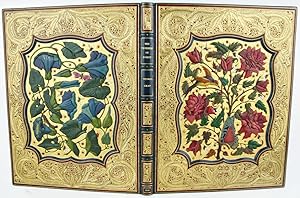
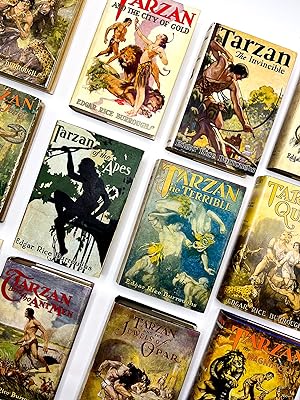

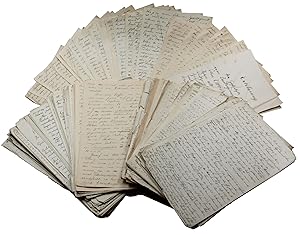
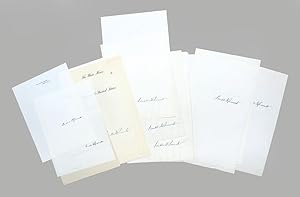

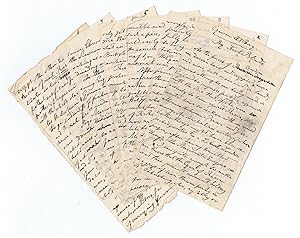
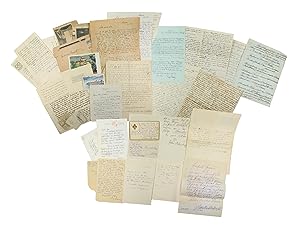
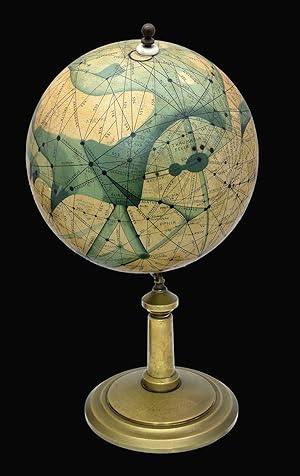
![Image du vendeur pour Ausgeführte Bauten und Entwürfe von Frank Lloyd Wright (Completed Building and Designs of Frank Lloyd Wright) [The Wasmuth Portfolio] mis en vente par Manhattan Rare Book Company, ABAA, ILAB](https://pictures.abebooks.com/inventory/md/md31098742133.jpg)
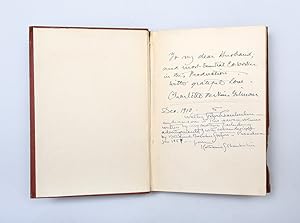
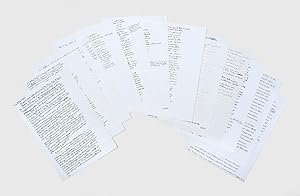
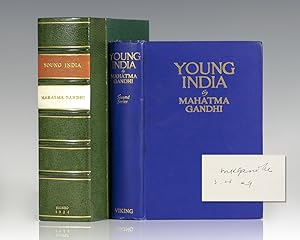
![Image du vendeur pour Autograph Letter Signed [ALS] on The Lord of the Rings mis en vente par Manhattan Rare Book Company, ABAA, ILAB](https://pictures.abebooks.com/inventory/md/md31725045637.jpg)



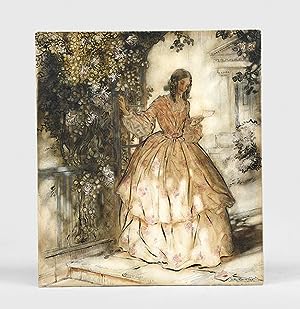

![Image du vendeur pour Marlborough. His Life and Times. Volume I [&] Volume II. mis en vente par Peter Harrington. ABA/ ILAB.](https://pictures.abebooks.com/inventory/md/md31825901069.jpg)
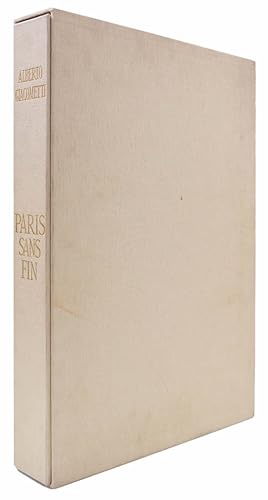
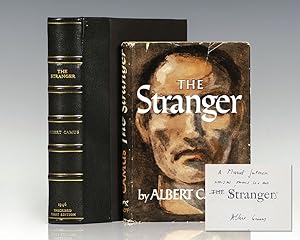
![Image du vendeur pour [Man's Search for Meaning] Ein Psycholog erlebt das Konzentrationslager (Österreichische Dokumente zur Zeitgeschichte, Bd. 1) mis en vente par Burnside Rare Books, ABAA](https://pictures.abebooks.com/inventory/md/md31693066089.jpg)
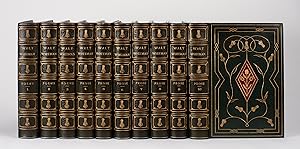
![Image du vendeur pour Typed Letter Signed [TLS] introducing The Lord of the Rings mis en vente par Manhattan Rare Book Company, ABAA, ILAB](https://pictures.abebooks.com/inventory/md/md31725056738.jpg)
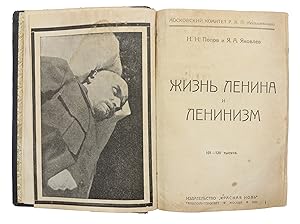
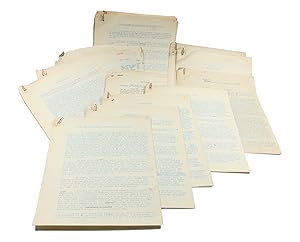
![Image du vendeur pour Typed Letter Signed [TLS] mis en vente par Manhattan Rare Book Company, ABAA, ILAB](https://pictures.abebooks.com/inventory/md/md31806810235.jpg)